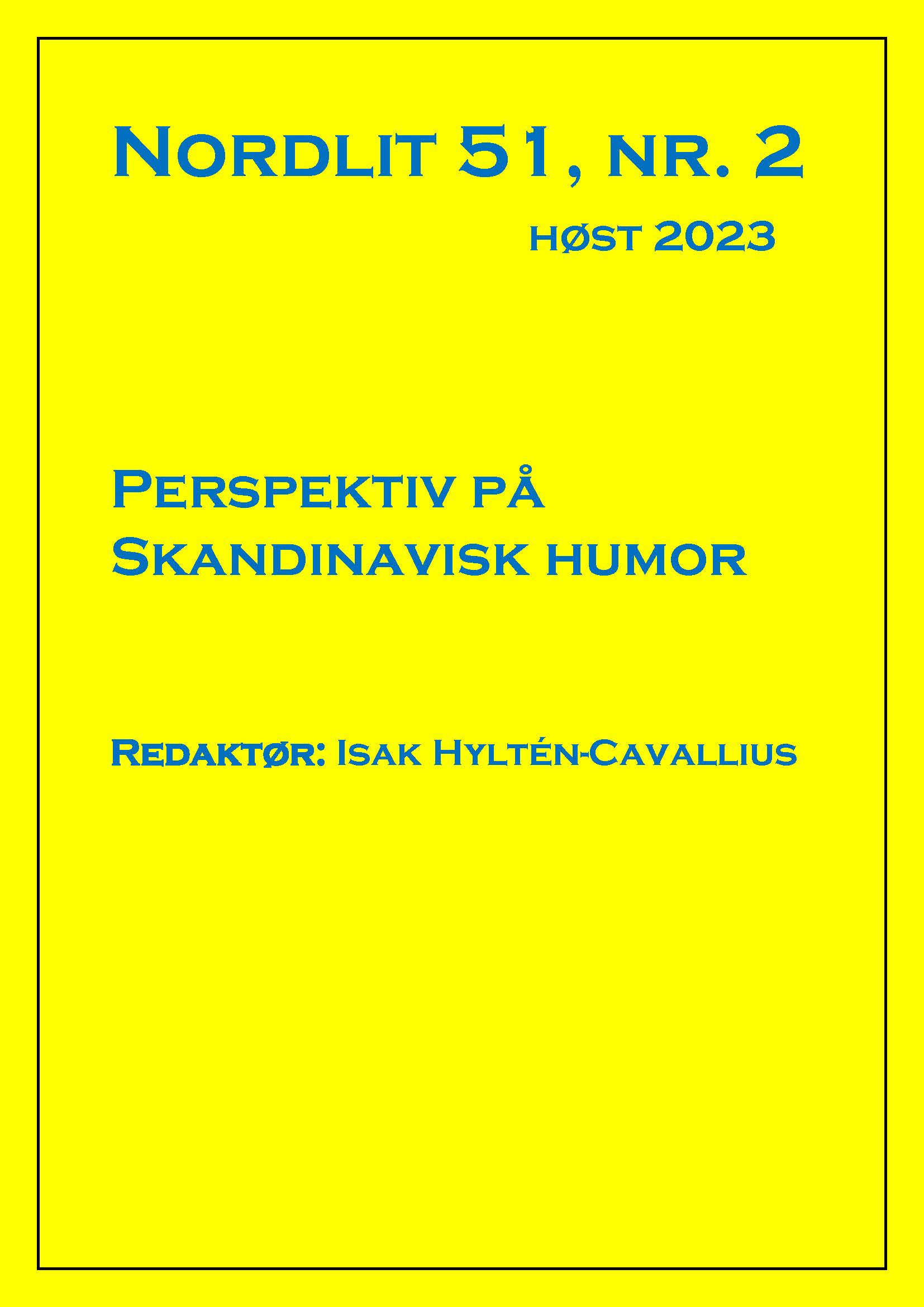A Sweden in Miniature, a Sweden in a Funhouse Mirror. Slyngstad Events as Social Satire on the Late Folkhem Period
DOI:
https://doi.org/10.7557/13.6890Keywords:
tall story, social satire, Slyngstad Events, Unni Drougge, narratives on the Swedish folkhemAbstract
The novel Slyngstad Events (2002) by Unni Drougge can be classified as a tall tale, i.e. a fictional, humorous story that is mostly meant to entertain. At the same time, the book contains a great deal of contemporary criticism: Åsabygden, a fictional area in Skåne where the story is set, suffers from the same problems as the late-modern Swedish welfare society in general and can be regarded as a Sweden in miniature. By analysing the novel's strong and expressive characters, I want to show that the novel is not just an entertaining tale, but can be regarded as a social satire in which the individual actors represent different ways of life and values, but above all different weaknesses and shortcomings of citizens in the welfare state. In a broader sense, Slyngstad Events also appears as a story about a Sweden that is no longer a happy folkhem and a model country, but is being transformed into its opposite, a bizarre monster country, something I develop by interpreting the novel against the background of the various historical accounts of the Swedish folkhem.
References
Berman, Sheri. 2006. "The folkhem was a success story". I The Swedish Success Story? redigerad av Kurt Almqvist och Kay Glans, översatt av Paul Fisher, 61-66. Stockholm: Axel och Margaret Ax:son Johnson Foundation.
Drougge, Unni. 2003. Slyngstad Events. Stockholm: Piratförlaget.
Głowiński, Michał, Aleksandra Okopień-Sławińska och Janusz Sławiński. 1986. Zarys teorii literatury. Warszawa: Wydawnictwa Szkolne i Pedagogiczne.
Highet, Gilbert. 1972. The Anatomy of Satire. Princeton: Princeton University Press.
Johansson, Lena M. "Kommentar av Lena M. Johansson/Ordhyllan". Adlibris. 11/07/2014. Hämtad den 20. september 2023. https://www.adlibris.com/se/bok/slyngstad-events-9789174370386
Knight, Charles A. 2008. The Literature of Satire. Cambridge [etc.]: Cambridge University Press.
Mithander, Conny. 2002. "Från Mönsterland till Monsterland. Folkhemska berättelser". I Berättelser i förvandling - berättande i ett intermedialt och tvärvetenskapligt perspektiv, redigerad av Åke Bergvall, Yvonne Leffer och Conny Mithrander, 53-85. Karlstad: Karlstads universitet.
Phelan, James. 1989. Reading people, reading plots. Character, progression, and the interpretation of narrative. Chicago and London: The University of Chicago Press.
Pollard, Arthur. 1980. Satire. London, New York: Methuen.
Ruth, Arne. 1995. "Det moderna Sveriges myter". I Svenska krusbär. En historiebok om Sverige och svenskar, redigerad av Björn Linnell och Mikael Löfgren, 544-571. Stockholm: Bonniers Alba.
Sidoruk, Elżbieta. 2018. Granice satyry. Białystok: Uniwersytet w Białymstoku.
Wiklund, Martin. 2006. I det modernas landskap. Historisk orientering och kritiska berättelser om det moderna Sverige mellan 1960 och 1990. Stockholm/Stehag: Brutus Östlings Bokförlag Symposion.
Wonham, Henry B. 1993. Mark Twain and the Art of Tall Tale, New York, Oxford: Oxford University Press. https://doi.org/10.1093/oso/9780195078015.001.0001
Żmuda-Trzebiatowska, Magdalena. 2017. Folkhemmet - czyli wspólny, dobry dom - w szwedzkich narracjach literackich o dzieciństwie. Poznań: Wydawnictwo Naukowe UAM.
Żmuda-Trzebiatowska, Magdalena. 2014. "Myten och dess arvtagare. Historiska och skönlitterära berättelser om folkhemmet". Folia Scandinavica Posnaniensia, Vol. 16. 92-113. https://doi.org/10.1515/fsp-2015-0007
Downloads
Published
How to Cite
Issue
Section
License
Copyright (c) 2023 Magdalena Żmuda-Trzebiatowska

This work is licensed under a Creative Commons Attribution 4.0 International License.









